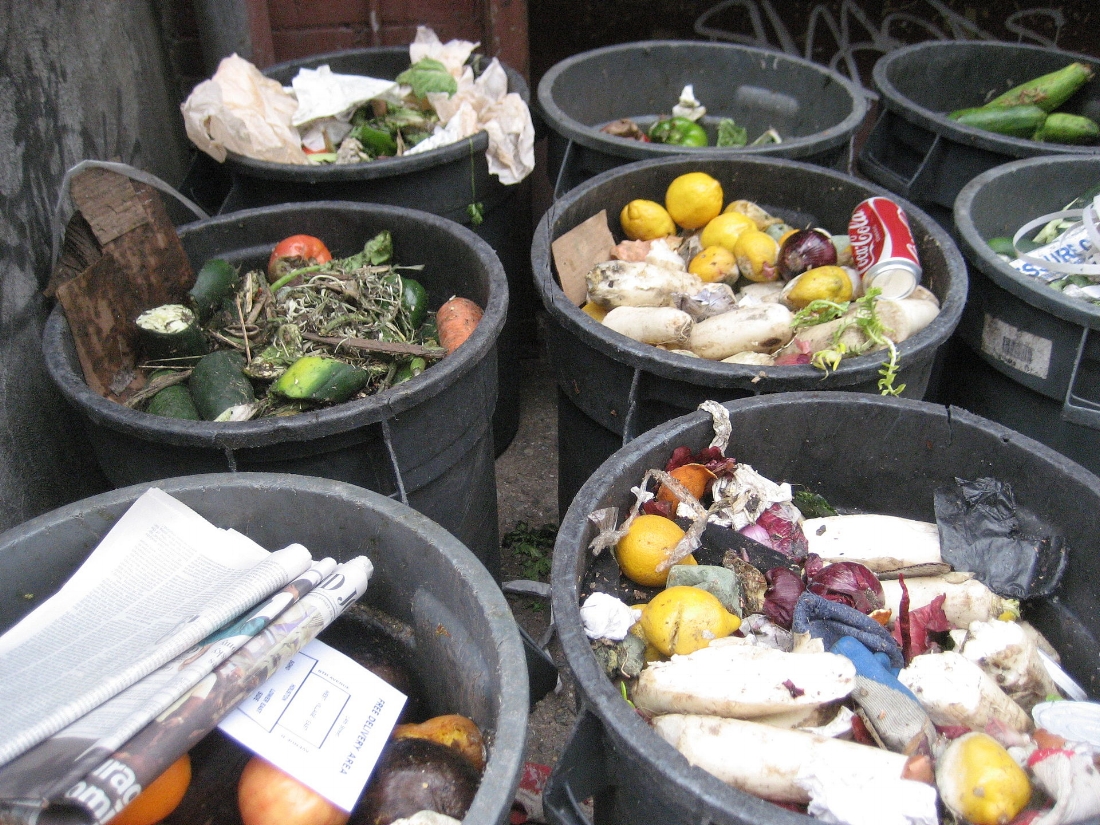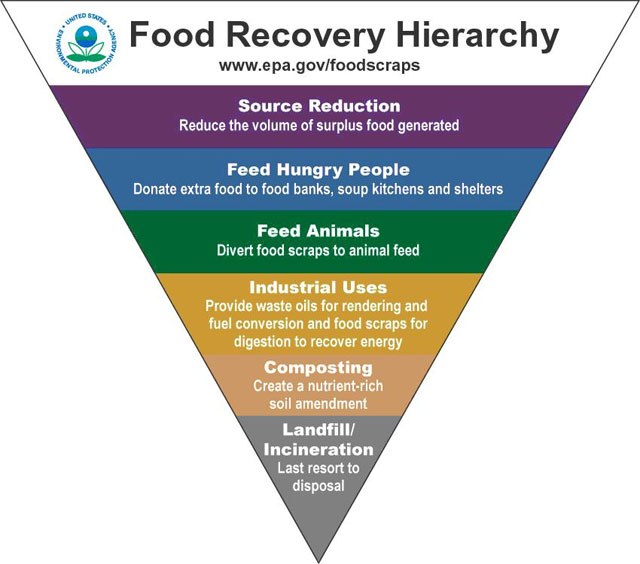Grocers Act to Reduce Food Waste
Source: Wikimedia Commons
“We educate team members and consumers to sort their trash and not just ‘throw it away,’ because there is no ‘away.’” - Tristam Coffin, Whole Foods Market
Abundance and waste. They are two sides of the same coin in America, and that goes for our food system, too.
According to Jonathan Bloom, author of Wasted Food, 40% of all food produced in the U.S. gets thrown away before it is consumed, and the vast majority of that (97%) ends up in a landfill, where organic food waste is one of the main culprits in methane gas production – a major contributor to global warming.
Each year, 160 billion pounds of food – the equivalent of $250 billion per year – is wasted, enough to fill the equivalent of two Rose Bowls every day, said Bloom, who spoke at the Sustainable Foods Summit held Jan. 22-23, 2013, in San Francisco, and produced by leading market research firm Organic Monitor.
With the planet’s population set to increase from 7 billion to more than 9 billion by 2050, it isn’t just a matter of increasing food production, but decreasing food waste as well as redistributing food to food banks. A number of grocers are taking steps to address this issue, including SuperValu, the third largest retailer in the U.S., which has achieved “zero waste,” or 90% diversion from the landfill, in 150 of its stores, said Michael Hewett, Director of Environmental and Sustainability Programs for Publix and a member of the Food Marketing Institute’s (FMI) Sustainability Executive Committee.
“As retailers pull cardboard, plastic, cans, etc., out of the waste stream, they are left with food,” said Hewett. “We must find ways to capture food before it goes bad and get it to food banks. From Ahold USA to Winn Dixie, grocers need to share best practices in a ‘pre-competitive’ way. That’s radical collaboration,” he said.
“Globally, one third of all food produced is wasted in processing, handling, storage, sale, preparation and serving of food,” said Amy Kirtland, Executive Director of Unified Grocers. Kirtland is working with grocers through the Food Waste Reduction Alliance, comprising members of FMI, Grocery Manufacturers Association and the National Restaurant Association, to divert and reduce food waste. Kroger is diverting organic waste to energy production, she said, while Hannaford educates children about food waste through a pilot composting project.
At Whole Foods Market, “We’re looking not for a ‘silver bullet,’ said Tristam Coffin, Whole Foods’ Energy and Maintenance Project Manager, so much as ‘silver buckshot,’ in that stores deal with food waste in region-appropriate ways.” For example, Whole Foods stores in St. Paul, MN, are working with a local farmer to divert food waste for hog feed; other stores work with farmers to supply food waste for compost. In Chicago, stores donate local produce waste to the Lincoln Park Zoo. “We educate team members and consumers to sort their trash and not just ‘throw it away,’ because there is no ‘away,’” he said.
With regard to donating food to food banks, the Bill Emerson Good Samaritan Food Donation Act, signed by President Clinton in 1996, helps reduce liability for grocers seeking to distribute food to food banks and the poor, said Claire Cummings, West Coast Fellow at Bon Appetit Management Co., a leading food service company working with universities and other institutions. “Our goal is to find ways to distribute 1 billion pounds of produce per year by 2015, and that includes making sure that food banks are prepared to take on additional capacity for donated foods ,” added Devi Raja, Director of Food Produce for Feeding America.


